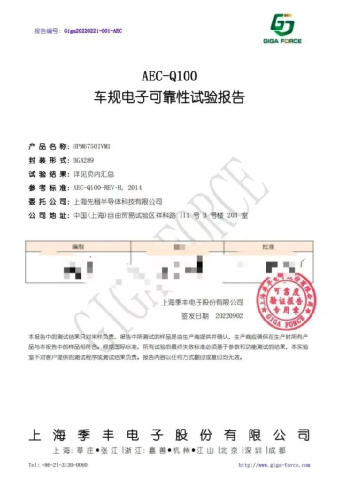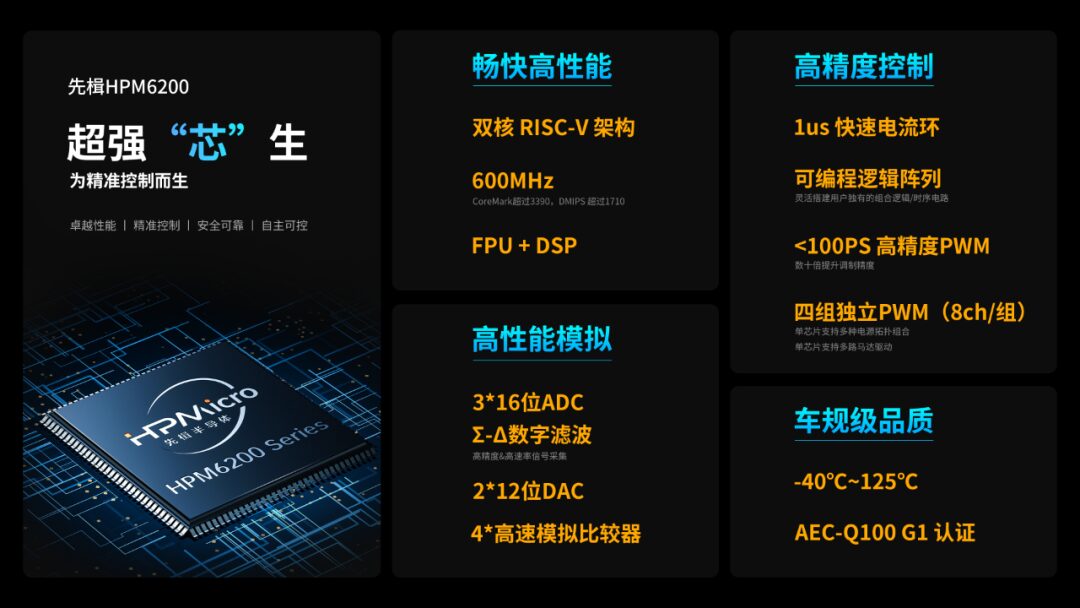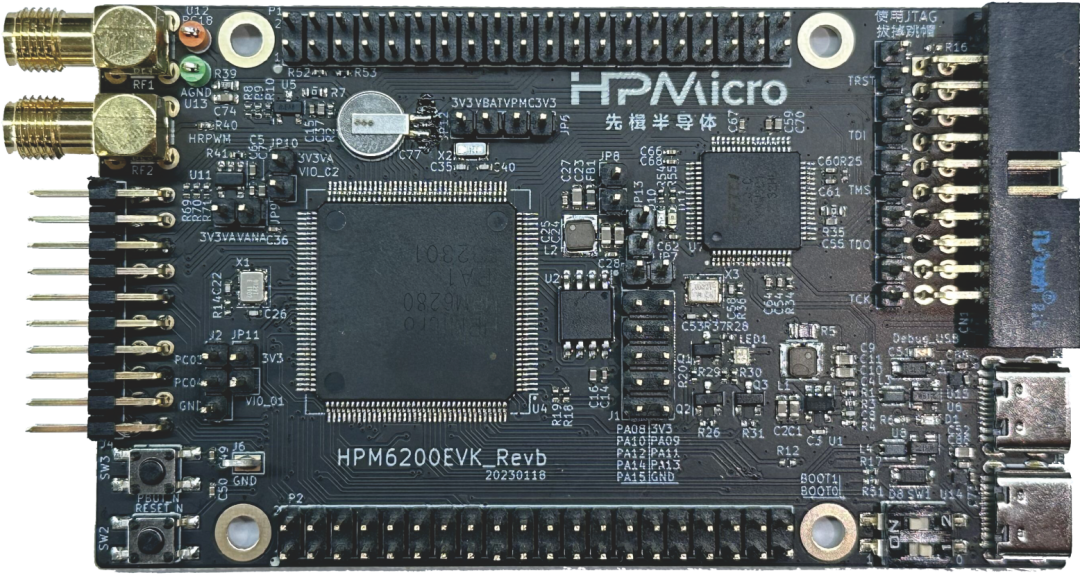




-
Compared to T company’s C2000, the HPM6200 series CPU performance has surpassed it. The HPM6200 operates at 600MHz, while the C2000 is below 200MHz. -
In comparison to S company’s G4 series, the HPM6200 series surpasses it in CPU performance, 16-bit ADC, and PLA functionalities. -
Analog technology has often been a weakness for traditional MCU companies; however, the HPM6200 series features three 16-bit ADCs that can achieve a sampling speed of 2MHz, along with four-channel Σ-Δ digital filtering. In terms of precision control, the HPM6200 series achieves the highest PWM precision in the world at 100 picoseconds, with four independent PWM channels enabling multi-motor control. These analog performance metrics can fully compete with international giants.

About Xianji
Shanghai Xianji Semiconductor is a semiconductor company dedicated to high-performance embedded solutions, covering microcontrollers, microprocessors, peripheral chips, and supporting development tools and ecosystems. Xianji Semiconductor prioritizes product quality, with all products undergoing rigorous reliability testing. The two high-performance general-purpose MCU product series, HPM6700/6400 and HPM6300, have performance levels surpassing similar international products and have completed AEC-Q100 certification, fully mass-produced and shipped to serve China’s industrial, automotive, and consumer markets. Xianji Semiconductor adheres to the principles of China-defined and China-manufactured products, catering to Chinese customers with a completely self-developed software ecosystem and development tools provided in an open-source manner to every developer in need, actively realizing the self-controllable development of the MCU ecosystem.